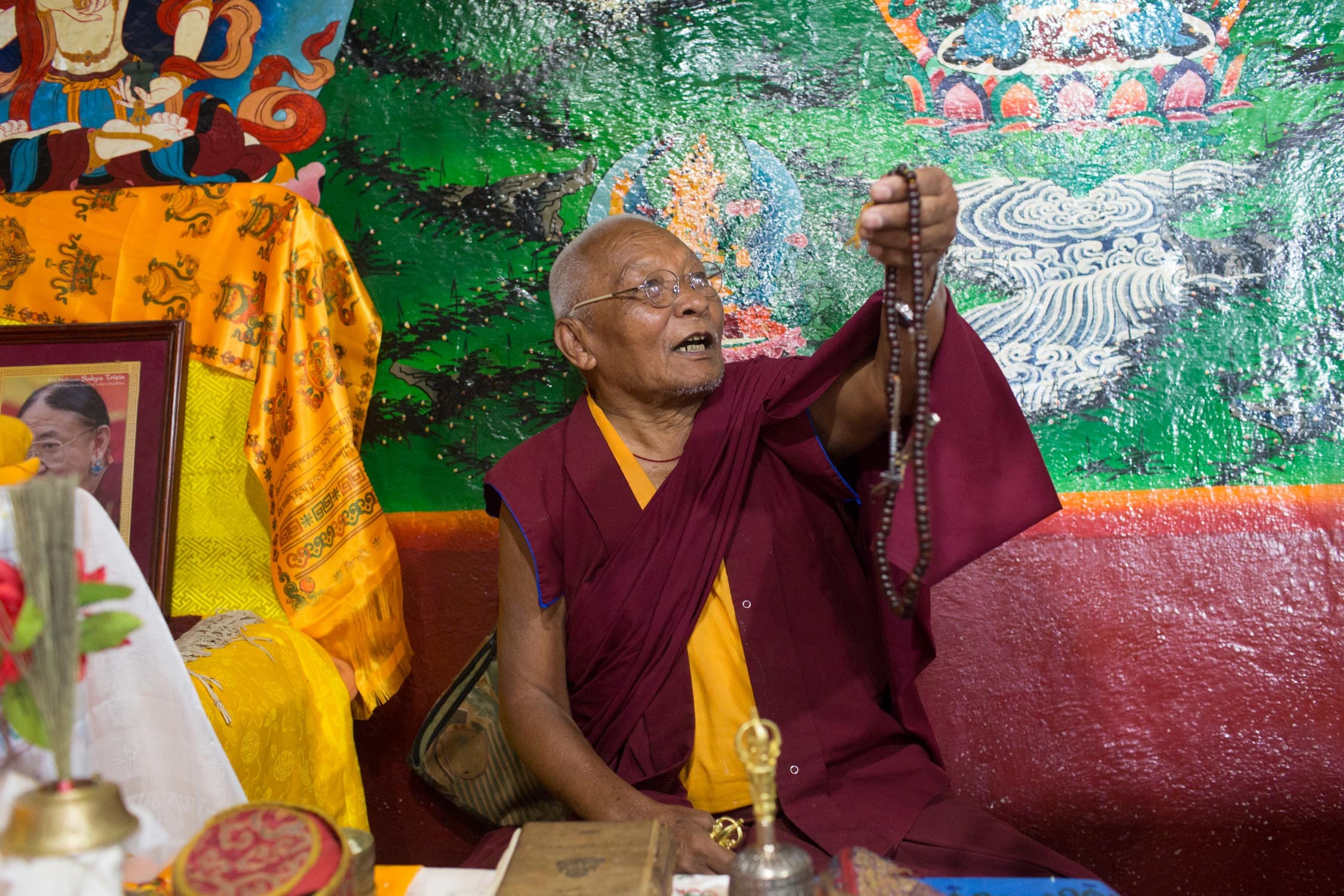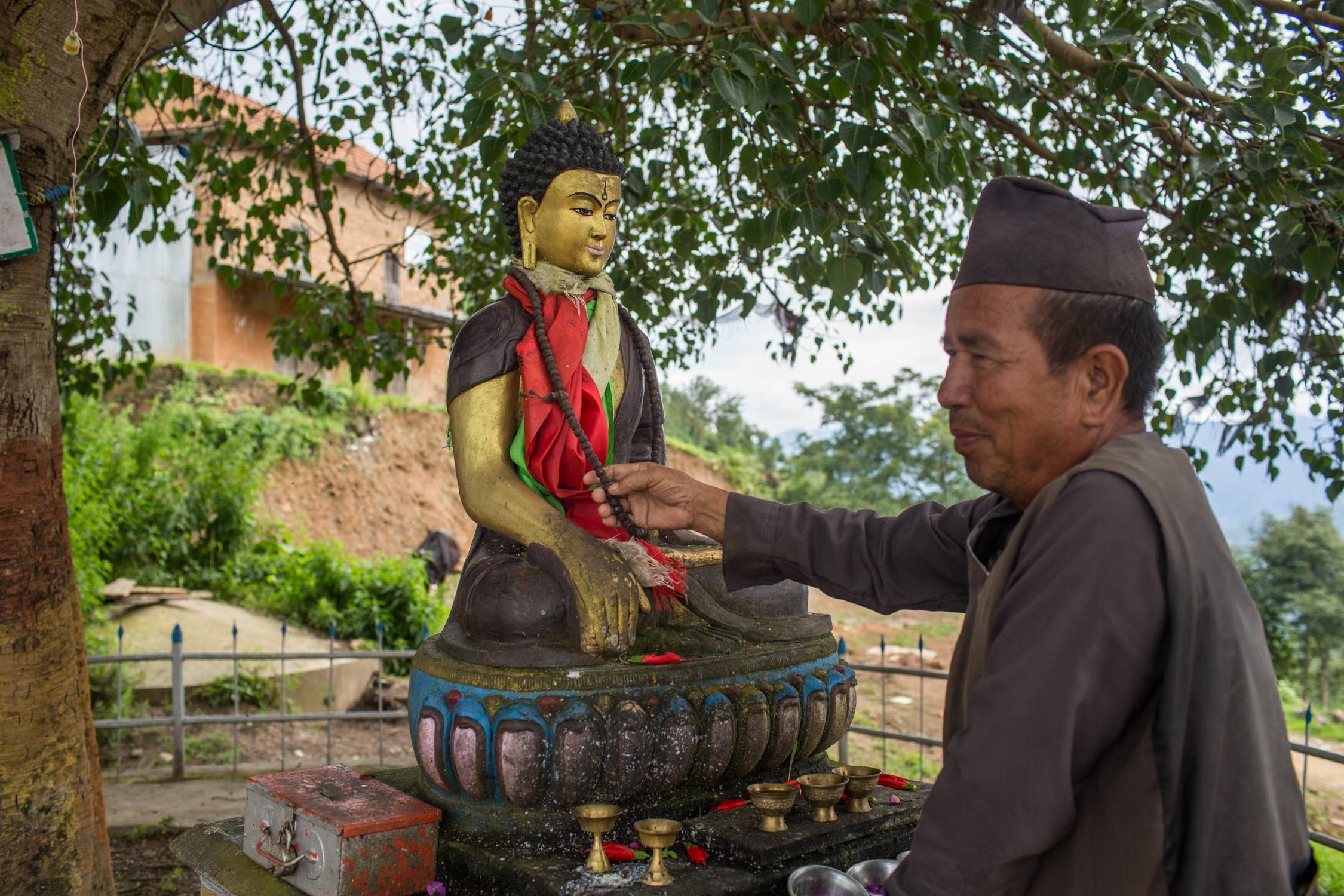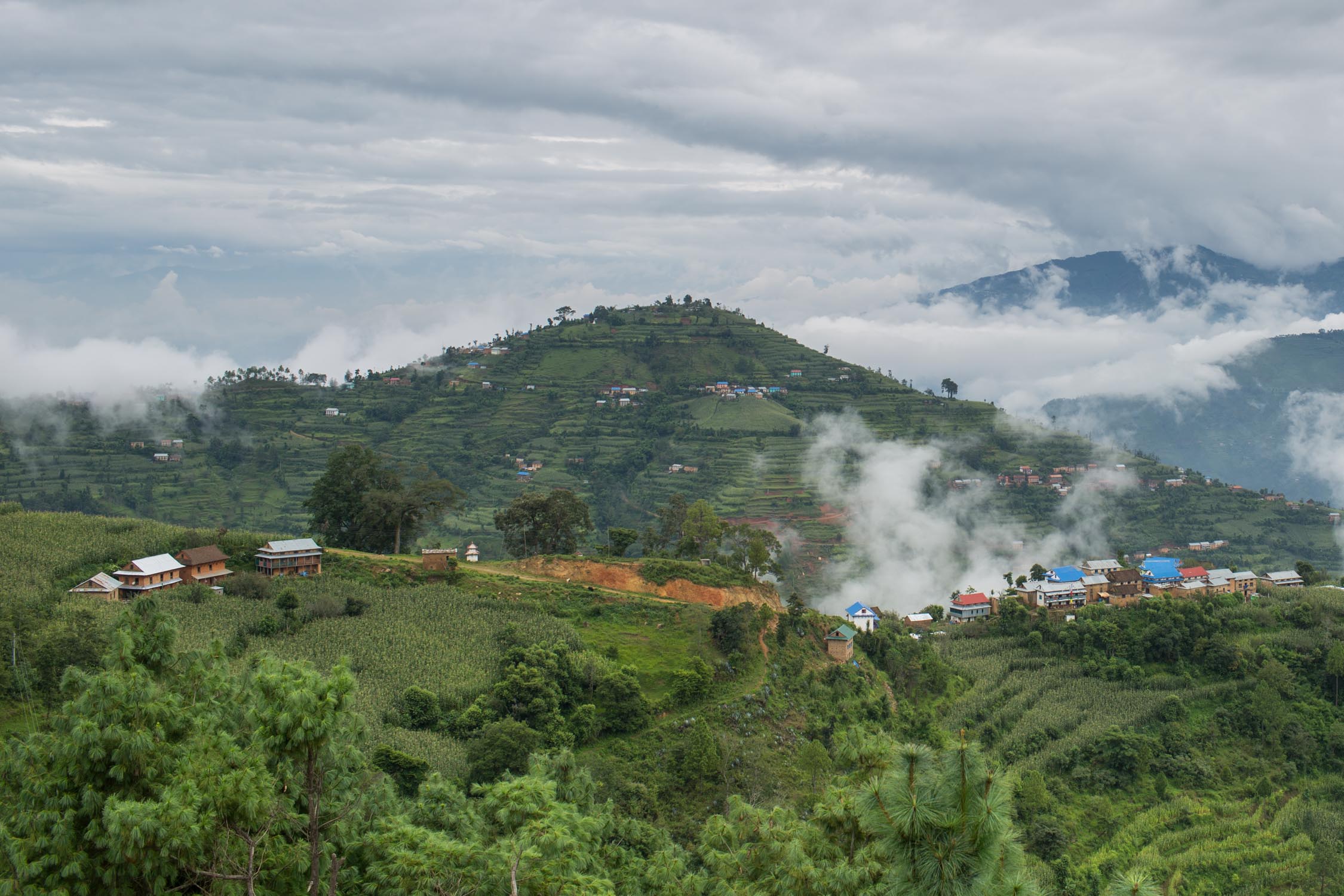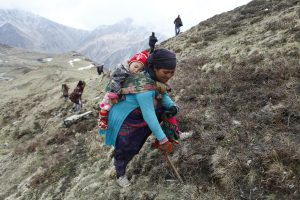Soon after we started to ascend towards Timal village from Bhakunde Besi – a small valley located in central Nepal fifty kilometres from Kathmandu – our car ended up stuck on the road ravaged by monsoon rains. Our driver cautioned us about going further, but we persevered. As I was preparing to get out so as to ease the load on the vehicle, a teenager rushed to our window and asked, “Mala chahincha? (Need a garland?). He was talking about the Tibetan prayer beads, made from seeds of the Buddha Chitta, a tree for which the place has recently become very famous.
The young boy, Sunil Sundas, studies in seventh grade and also helps out transporting Buddha Chitta for his relatives in his free time. “Everybody is planting this tree nowadays,” he said, “My brother said that they are struggling to sell it at higher prices this year. We have also planted few trees, they will produce fruit in a couple of years.”

Sunil Sundas, a school student from Timal, Kavre, hope that the Bodhichitta trees that is growing in his family land will feed his family in future. (Image by Nabin Baral)
He is a little unusual in his village, because people have stopped speaking openly to outsiders since the Buddha Chitta trade started to boom. A few kilometres further up the road, we encountered a small hut owned by Jaman Singh Lama. He explained the reason for the suspicion. “People may come and ask you to show your store of Buddha Chitta and rob you,” said Lama, “So people are bit hesitant to speak to outsiders.”
Last year’s earthquake forced him to move from his broken house to the basic hut, which now functions as a teahouse, local grocery, his bedroom and much more. He had hoped to make some money working overseas and had paid human traffickers USD 10,000 to give him the opportunity, but after a few months he was left in Cambodia without any money or return ticket. Finally his brother sent him airplane tickets, and he returned home empty handed. Now he hopes to recover some of the losses from the Buddha Chitta. “I am also a local trader and a producer but my saplings have just started to fruit from this year,” he said, opening a box to show us the beads. “My trees did not give good quality beads this year, not fully mature, but I still earned more than USD 1,000,” he said.
A new species
The name of the tree comes from two Sanskrit words, “Bodhi”, which means “to enlighten” and “Chitta”, which means “soul”. The Nepali indigenous Tamang communities call it Phrengba but in Tibet it is called Tenwa and in Chinese it is called Shu zhu.

The beads are called Buddhachitta locally, but more commonly known as Bodhichitta, which means “enlightened soul”. (Image by Nabin Baral)
As prices of the beads grew, locals from Timal village took samples of this tree species to the Kathmandu-based government herbarium centre in 2013. A team led by botanist Khem Raj Bhattarai visited the site multiple times and found that this species of the ziziphus did not match those found in India, Bhutan, Bangladesh, China or any other part of Nepal. The new species has now been named Ziziphus budhensis, and its discovery was published in the Indian Journal of Plant Sciences.

Guru Kunga Dupshang Lama of Awalokeshower Monastery explains the importance of the prayer beads in Buddhism. (Image by Nabin Baral)
A prayer garland consists of 108 normal beads plus one master, or Guru, bead. All beads should be of same size except the master bead. Beads are measured in millimetres by a device used by Chinese traders. “These are religious products so there is not a specific rate and most often both the buyers and sellers reach into a mutual agreement case by case basis,” said Chet Bahadur Tamang, a local trader.
As we explored the village, everyone gave us different rates. Most of the beads are of the size between 13 mm to 16 mm, and are sold at 50 to 200 USD per mala (garland). In addition to size, those with maximum number of linings (called shure in Nepali) are the most expensive, but these are rare. Jitpur Lama, a local trader who did not allow us to film him, showed us a six-lined piece, which he was carrying in his pocket. Wrapped in a soft thin white cloth, the bead was worth its weight in gold. “I didn’t sell this single piece, although I was offered USD 800. It is priceless,” he said.

Gorash Bahadur Tamang has earned large amount of money from these trees over the past four years. He believes that the trees were given by lord Buddha. (Imabe by Nabin Baral)
Advertising guru
A few metres from a large statue of Padmasambhava (known as Guru Rinpoche in Tibet and Bhutan), Kunga Dupshang Lama of the Awalokeshwor monastery in Timal was busy with his morning prayers. He explained why these beads are so valuable. “Centuries ago, after defeating a monster residing in this village, Guru Padmasambhava sowed these beads and blessed the villagers that someday this will bring prosperity to them,” he said.
Different materials are used to make Buddhist prayer garlands, these include everything from coral to gold, red sandalwood to Bodhi Chitta, and human bones to ivory.
Locals claim that the Dalai Lama also uses Bodhi Chitta beads and has told his followers that these beads from Nepal are the best ones to use, although no evidence of such a declaration exists.
Bureaucratic hassles
The local villagers had high hopes of increasing their incomes through the sale of this local resource, but were frustrated by bureaucratic hassles. Jaman Singh Lama explained how hard it is to get into the market. “ You have to get a license from the district forest office but to do so you have to certify your land ownership from various other government agencies, and then you have to bribe the police while transporting the product, otherwise they will seize it,” Lama explained. “To be honest, we bribe the police and transport it rather than getting all these documents. I have paid more than USD 1,000 every year.”
A few major traders have started chartering helicopters since ground transportation has become unsafe as the threat of looting has increased. “It costs almost the same because you have to bribe government officials, security forces and pay for the goons linked to political parties. Government officials deny these accusations,” said Chet Bahadur Tamang.
“After the locals complained we amended our forest regulations to ease the trade of these beads. Now the farmers do not need any licenses,” added Dangi at the forest ministry. The amended regulation has listed Buddha Chitta, along with other 12 herbs, as not needing a Chodpurji(trade/transport license).
On the ground, though, traders like Lama claim that the hassles are still the same.
Vulnerable, opaque market worries the villagers
Gorash Man Tamang from the village of Kot Timal sold beads for USD 10,000 this year. Last year the same amount went for USD 16,000. Indrajit Tamang sold a large consignment for USD 115,000 this year, while last year it would have sold at USD 200,000 last year. Some of this loss is because of theft, but prices are also falling. According to Lama, in the past the traders would pay for the trees as soon as the fruits started appearing in May-June, but this time the traders only made a down payment, and promised to pay the remaining amount only after selling their stock. “Sales this year are not encouraging,” he added.

Seventy-six year old Madhav Prasad Koirala is one of the unlucky ones. His father chopped all the Bodhichitta trees down to make room for crops. (Image by Nabin Baral)
As of now market demand is hard to assess. It is reported that the beads are flown out to China, and then sent to areas like Tibet, or onto Japan or Malaysia. “Information regarding market demand is not well documented,” said Resham Bahadur Dangi, joint-secretary at Nepal’s Ministry of Forest and Soil Conservation. He cautioned against the idea of mass propagation of the species. If the demand falls, and the price falls with it, this would wipe out the investment of poor villagers. “Better know how is needed,” he said.
The original version of this story was published on The Third Pole.








